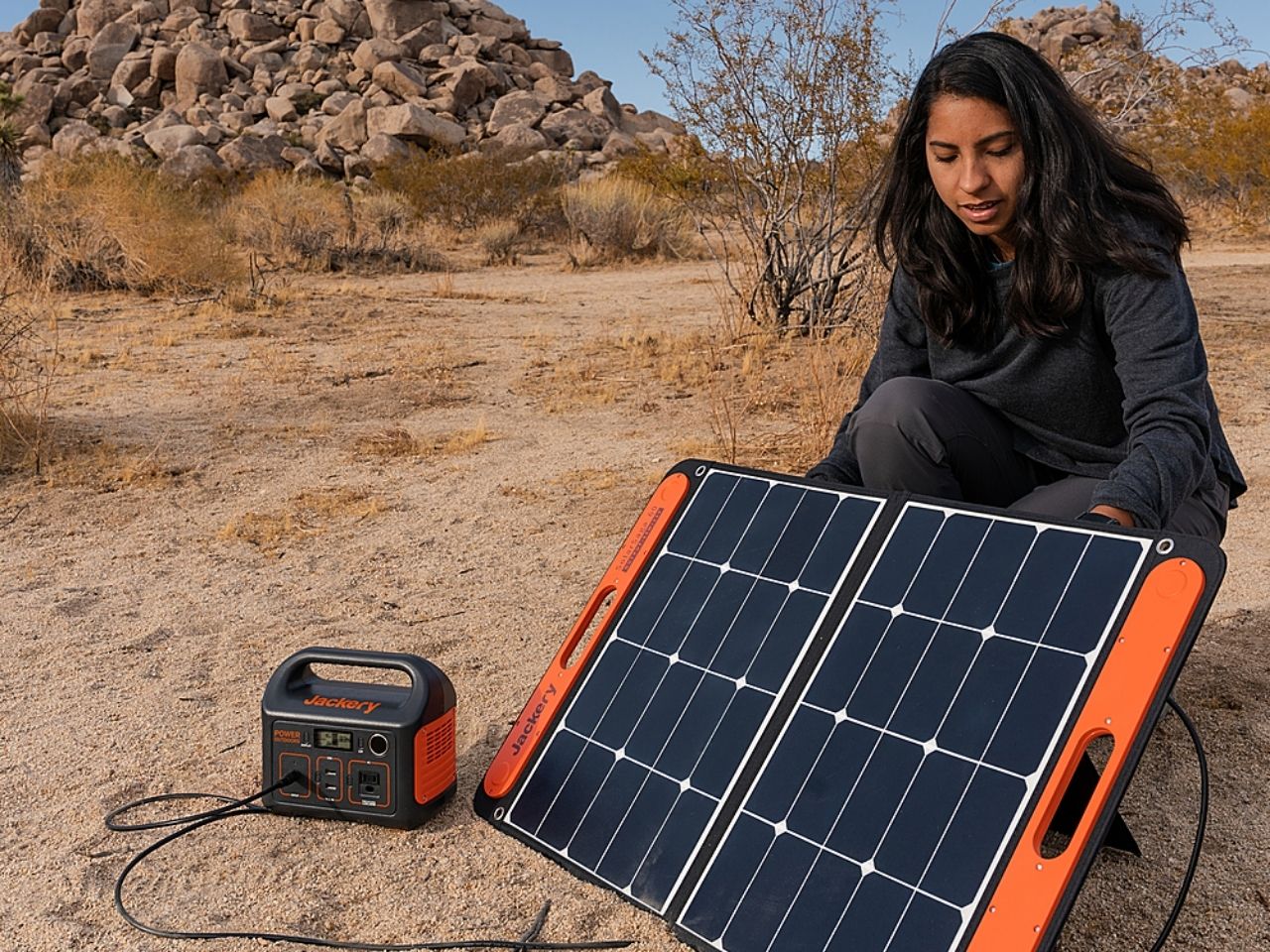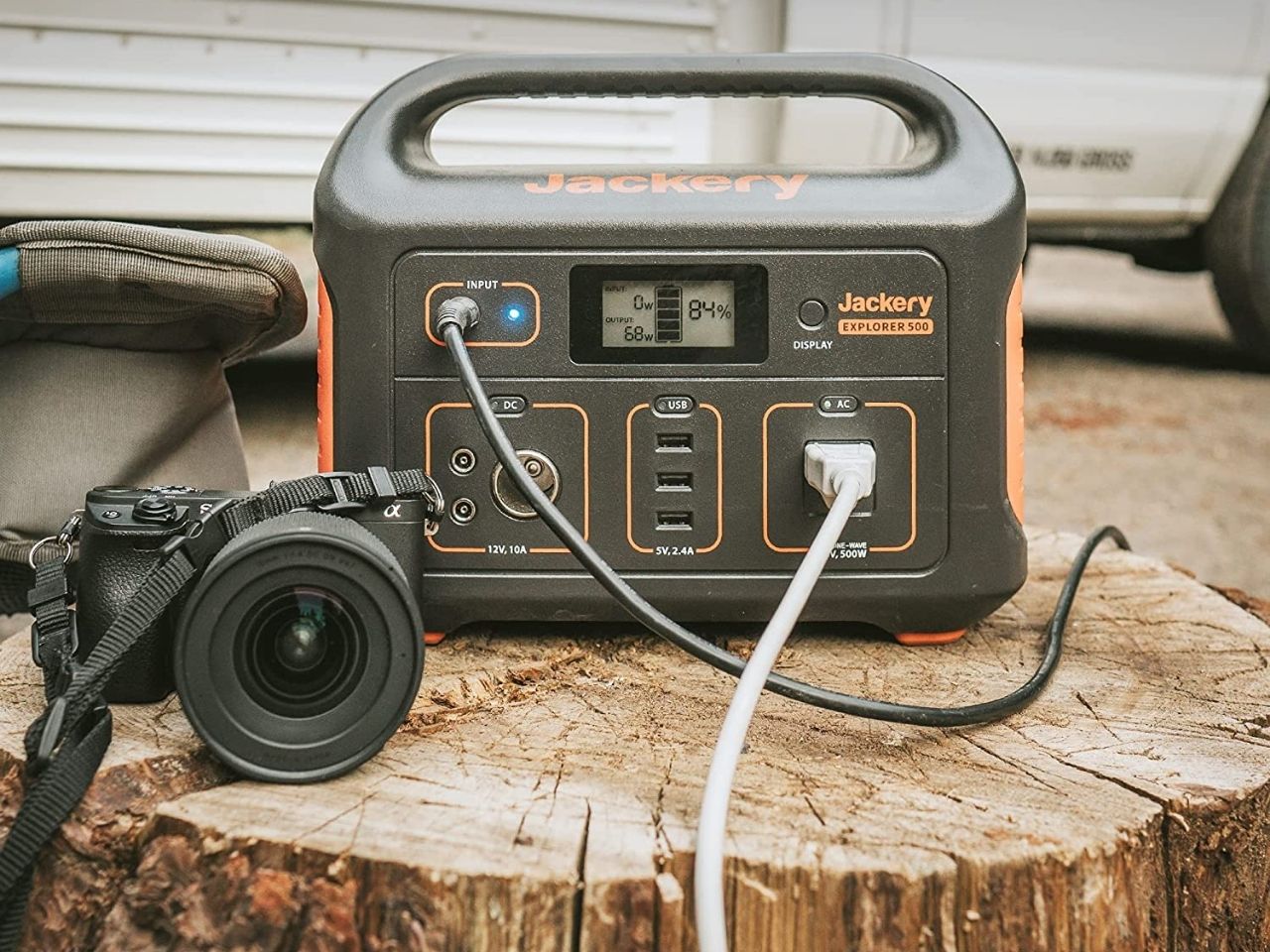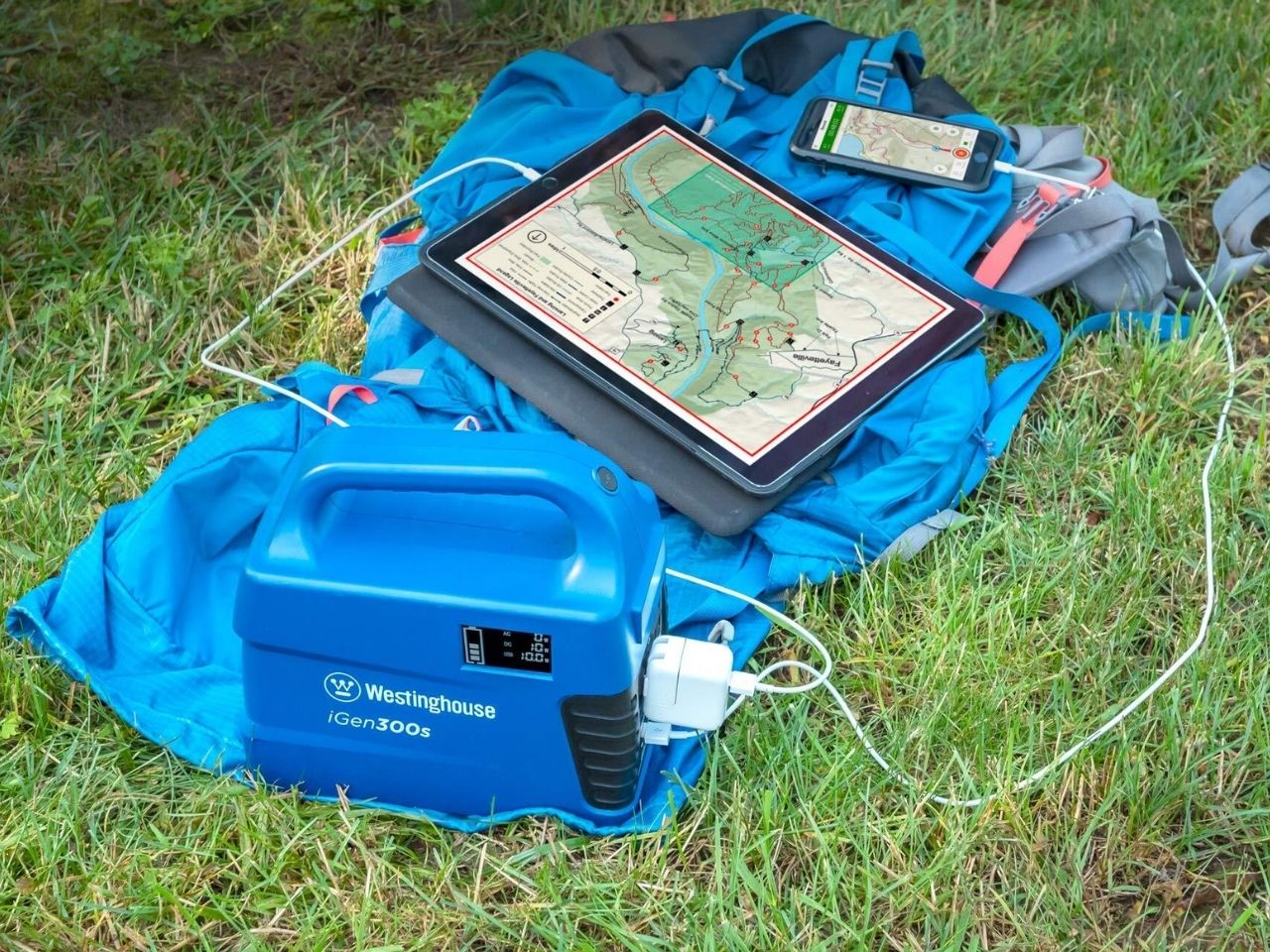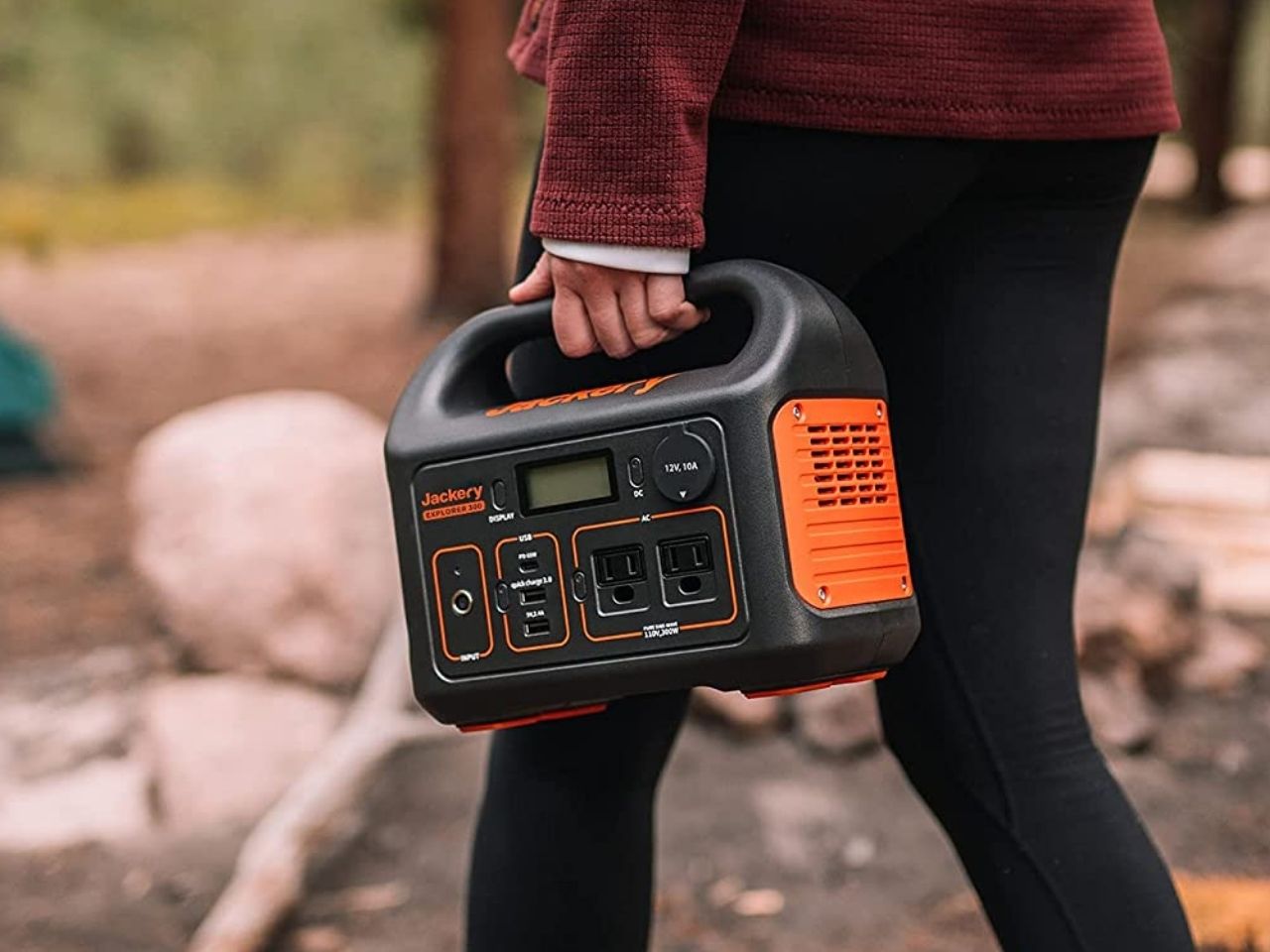Are you planning an outdoor adventure soon and wondering how you’ll get power? Then today’s your lucky day because we found some incredible deals for portable power stations across multiple retailers. Whether you’re looking for a compact unit to get you through the weekend, or a bigger battery for longer excursions, these deals will have you covered. In addition, all of these units are compatible with efficient solar generators that will keep you juiced throughout extended adventures. Keep reading to discover what makes a solar generator a must-have on your camping trip packing list.
Best Solar Generator Deals
- Westinghouse iGen300s —
$249, was $349
- Jackery Explorer 300 —
$300, was $350
- Jackery Solar Generator 290 —
$480, was $539
- Jackery Explorer 500 —
$530, was $600
Westinghouse iGen300s — $249, was $349
Why Buy:
- Supports USB-C and Quick Charge 3.0 charging
- Weighs just over 6 pounds
- Up to nine different output ports
- Lithium-ion batteries last a long time
There’s no reason you have to break the bank to get power on your next camping trip with the Westinghouse iGen300s Portable Power Station. Despite its affordable price, it’s still packed with features that will help you stay plugged in throughout your adventure. Its 296Wh battery and nine different output ports — including three USB slots and two standard home outlets — will ensure that you never run out of juice. This unit supports up to 300W of continuous power, perfect for powering drones, lights, and laptops. Despite its rugged, sturdy construction, it’s just the right size to bring along on a road trip, weighing in at just around 6.3 pounds. You can also charge it up with the optional solar panel or plug it into your wall outlet from home before packing it into your truck.
Jackery Explorer 300 — $300, was $350
Why Buy:
- Fast recharging speed
- Built-in battery protection
- Excellent as an emergency backup power source
- Easy-to-grip handle
It’s your worst nightmare: You wake up 2 hours before you leave for camping, and you forgot to charge your portable power station. Fortunately, the Jackery Explorer 300 is built for that situation. Its headlining feature is the ability to “fast-charge” by plugging in both the wall outlet and the USB-C port. That means it takes only two hours to recharge the battery by 80%, which should be enough to last you for most of a short trip. For longer road trips, you can also connect it with the optional Jackery SolarSaga panel for additional power. This generator comes with a 293Wh lithium-ion battery pack, which it outputs across its two AC ports, USB-C charging port, DC car port, and two standard USB-A ports. Despite its small size, it can charge a Nintendo Switch for up to 40 hours or a digital camera up to 15 times. So no matter what you’re packing, the Explorer 300 has you covered. That’s why it’s easily one of the best pieces of solar gear at this price point.
Jackery Solar Generator 290 — $480, was $539

Why Buy:
- Comes with everything you need for a solar setup
- Waterproof and dustproof rating
- Compact form factor
- Built-in MPPT controller for better efficiency
If you’re looking for the most straightforward way to set up a solar charging station, this Jackery bundle is the perfect pick. It comes with both the Jakcery Explorer 290 portable power station and a separate solar panel, which is incredibly easy to install. That’s everything you need to keep your equipment powered, even if you spend weeks somewhere with no electricity. The Explorer 290 is a 290Wh power box with all of the stability and power of other Jackery models, but with a smaller form factor that’s easy to carry around. The included 100W solar charger can power it up entirely in just five hours in optimal weather conditions. There’s also a built-in MPPT controller that makes your solar charging process more efficient. So if you suddenly find yourself camping in the rain, there’s no need to worry. The panel is made of durable materials and is IP55 waterproof and dust resistant, helping it withstand the elements in challenging environments.
Jackery Explorer 500 — $530, was $600

Why Buy:
- Industry-leading battery management system
- Massive 518Wh battery capacity
- Pass-through charging support
- Rugged construction
When it comes to the Jackery Explorer 500, the proof is in the reviews. It has nearly 6,000 5-star reviews on Amazon and an average rating of 4.8 stars, making it one of the most beloved pieces of equipment among adventurers and campers. This is one of the best portable power packs you can get at this price point. The Explorer 500 is more than enough to handle all your power needs, no matter where you’re headed. It’s equipped with a massive 518Wh battery yet still retains a portable form factor, so you can quickly bring it from one destination to the next. Jackery also designed it with stability in mind, so it comes with many built-in battery management features to ensure your safety and the device’s longevity. Thanks to pass-through charging support, you can even power your devices while the Explorer 500 is charging.
When are the Best Solar Generator Deals?
Like other outdoor equipment, the biggest solar generator deals typically come during the significant sales events scattered throughout the year. You’ll likely find the deepest discounts on Prime Day in the middle of the year and on Black Friday and Cyber Monday during the holiday season. However, even though the lowest prices might come later, those discounts on solar generators aren’t significantly better than the ones you can find now. In some cases, these deals might not differ at all. For example, the Jackery Explorer 300 received the same discount during the Black Friday sales last year.
This means some of the big sales events might not provide as deep a discount as you’d expect. If you’re eager to get a solar generator right now, there’s really no reason to wait. These exact same models will probably be the ones on sale, and they’re already available for a deep discount. You’ll probably find the perfect power station for you among all the great solar generator deals around today.
In addition to being great equipment to bring along to your camping trips, these power stations also serve a secondary purpose. These units can act as emergency backup power sources during power outages, so the sooner you have one in your home, the better. Not only does it give you access to stronger light sources, but you’ll be able to use your phone to contact emergency assistance.
On top of that, spring is finally here, and summer is just around the corner. This is the perfect time to start planning your future camping trips and adventures, including making the perfect packing list. The first huge sale of the year — Prime Day — doesn’t come until July. So if you wait until then, you might not be able to get the perfect solar generator before your big summer





